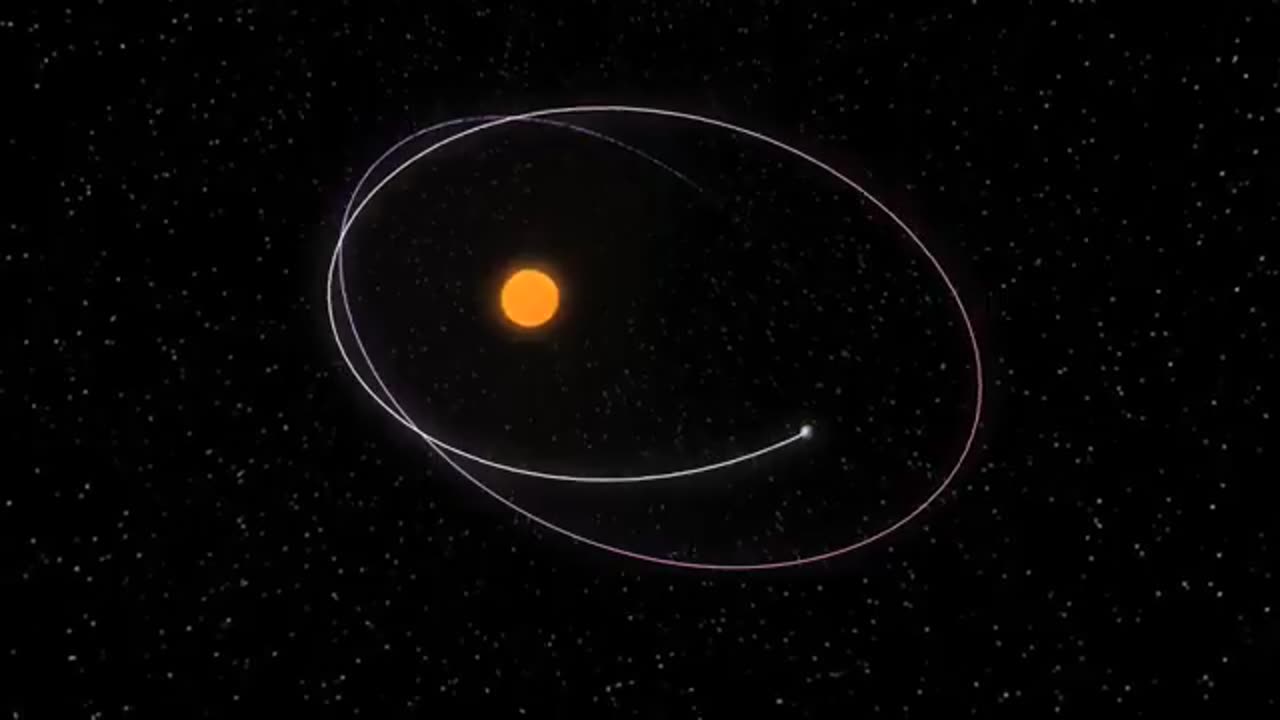Premium Only Content

Earth's motion around the Sun, not as simple as I thought
Indeed, Earth's motion around the Sun is more complex than the simple idea of a circular orbit we often imagine. Let's unpack it:
---
### **1. Elliptical Orbit (Kepler's Laws of Planetary Motion)**
Earth's orbit around the Sun is not a perfect circle but an **ellipse**, with the Sun at one of the focal points. This means the distance between Earth and the Sun varies:
- **Perihelion**: The closest point to the Sun (about 147 million km).
- **Aphelion**: The farthest point from the Sun (about 152 million km).
---
### **2. Varying Orbital Speed**
Earth’s speed changes depending on its position in orbit:
- At **perihelion**, Earth moves faster because of the Sun's stronger gravitational pull.
- At **aphelion**, Earth moves slower.
This behavior is described by **Kepler’s Second Law**, which states that a line drawn from the Sun to the Earth sweeps out equal areas in equal times.
---
### **3. The Ecliptic Plane**
Earth's orbit lies on the **ecliptic plane**, but it is tilted relative to other celestial planes. This tilt gives rise to:
- The **seasons**: Caused by the axial tilt of ~23.5°, not by Earth's varying distance from the Sun.
- Variations in solar intensity and day length at different latitudes.
---
### **4. Precession and Nutation**
Earth’s axis isn’t fixed; it slowly wobbles in a motion called **precession**. Over ~26,000 years, the axis traces a circle, altering the alignment of the poles and the timing of seasons.
**Nutation** adds smaller periodic wobbles due to gravitational influences of the Moon and Sun.
---
### **5. The Solar System’s Motion**
Earth's orbit doesn’t happen in isolation:
- The entire **solar system** is moving around the center of the Milky Way galaxy at about 828,000 km/h.
- As a result, Earth's path is a **helix-like trajectory**, not a simple 2D orbit.
---
### **6. Gravitational Perturbations**
The gravitational pull of other planets, especially **Jupiter** and **Venus**, slightly alters Earth's orbit. These changes are part of what leads to long-term orbital variations (Milankovitch cycles), influencing Earth's climate.
-
 1:09:33
1:09:33
Glenn Greenwald
10 hours agoMichael Tracey Reports from CPAC: Exclusive Interviews with Liz Truss, Steve Bannon & More | SYSTEM UPDATE #412
82.2K69 -
 56:02
56:02
Sarah Westall
7 hours agoBiohacking & Peptides: Weight loss, Anti-Aging & Performance – Myth vs Reality w/ Dr. Diane Kazer
33.2K14 -
 11:22
11:22
Bearing
17 hours ago"Anxious & Confused" Federal Workers FREAK OUT Over DOGE Efficiency Email 💥
38.5K60 -
 1:31:20
1:31:20
Flyover Conservatives
1 day agoUS STOCK MARKET: Sinking Ship - Dr. Kirk Elliott; How I Fought Back Against Woke Schools & Stopped Gender Bathrooms - Stacy Washington | FOC Show
51.3K1 -
 1:08:09
1:08:09
Donald Trump Jr.
11 hours agoFBI Dream Team, Plus Taking Your Questions Live! | Triggered Ep.219
189K252 -
 7:32:37
7:32:37
Akademiks
10 hours agoDrake and PartyNextDoor '$$$4U' Album Sells 250K first week. BIG AK IS BACK.
110K11 -
 3:12:08
3:12:08
MyronGainesX
10 hours ago $30.72 earnedDan Bongino Named As Deputy Director Of FBI And CPAC Recap
89.9K27 -
 3:12:31
3:12:31
vivafrei
9 hours agoBarnes Live from Seattle - Defending Benshoof in a Case that is CRAY CRAY!
130K45 -
 2:12:12
2:12:12
Robert Gouveia
10 hours agoLiberals EXPLODE over Elon's Email; Lawsuits FLY; Sanctions?? Congrats Dan!
103K36 -
 1:33:36
1:33:36
Redacted News
10 hours agoBREAKING! PUTIN LAUNCHES MASSIVE OFFENSIVE IN UKRAINE AS EUROPEAN LEADERS PUSH FOR MORE WAR
181K245